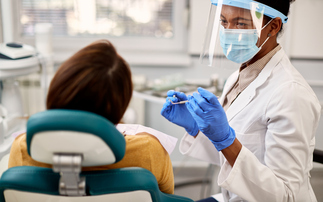The nation's COVID-19 highs and lows in five phases
The first weekend of lockdown was the high point (23 March) - and the hospitalisation of Prime Minister Boris Johnson (5 April) the lowest point - during the ‘emotional rollercoaster' of COVID-19 so far, biometric sleep data from Simba has revealed.
According to the mood and sleep tracking app, which had 50,000 users from 8 March to 25 April, the sleep patterns tracked during the crisis place the highs and lows of the pandemic into five phases, as well as laying bare our nation's increasing reliance on alcohol as an emotional crutch.
Wellbeing psychologist Dr Andy Cope said: "The results shine an intriguing light on this very real emotional ‘corona-coaster' the nation has been on during COVID-19."
The exhausting highs and lows of dealing with the crisis are bound to have long term effects on our mental health.
According to the data, there was an initial ‘digestion phase' which began on 21 March, the day after the PM announced the closure of schools, pubs, restaurants, gyms and other social venues for the foreseeable future.
After a period which showed in a collective dip in mood, the morning of 23 March was a low point in which the country anxiously awaited for the lockdown to be announced three days after many schools were shut down.
Fleeting high
During the next phase, described as ‘fleeting high', according to Simba, the mood of the nation "soared momentarily" to pre-COVID levels around Friday 27 March, the end of the first week of the government's lockdown.
This period of "brief euphoria" started on 24 March, the day after the lockdown was announced, has been described by Dr Cope as a form of "denial" or "working from home utopia" likened to a holiday feeling.
The happiness psychologist also suggested that the momentary lift could be a reflection of government's more proactive response to the virus.
Honeymoon's over
Another short-lived spike in mood occurred the day after Stephen Powis, the national medical director of NHS, announced "green shoots" of recovery as infections slowed for the first time, the sleep data shows. Prior to that, there was a dramatic slump in the nation's mood described as an end to the ‘honeymoon period', as the realities of working from home, the possibility of being furloughed or redundancy and the stress of home-school set in.
This period also included news the Prince of Wales had contracted the virus, which was soon followed by the PM, health secretary Matt Hancock and chief medical officer Chris Whitty admitting they were displaying coronavirus symptoms.
"Wake-up moods were certainly more erratic during the first two weeks of lockdown. The data also reveals a notable drop in sleep quality from 23 March, showing an average decline in sleep quality compared to the same period before the 23 March of 12%," said Dr Cope.
Reality hits
According to the data, Stephen Powis's briefing on 31 March had a positive impact on nation's mood slightly, but reality hit hard days later.
A major slump was ignited after the Prime Minister was admitted to London's St Thomas' Hospital on 5 April showing symptoms of coronavirus. This led the country "feeling rudderless," said Dr Cope, as the nation approached its "rock bottom".
The Queen's speech, in which she was said to invoke the "spirit of the Blitz", failed to have the desired effect as the decline continued. As the data shows, the morning of 7 April was the country's lowest point. Interestingly, the data shows alcohol consumption dropped around this time, with the nation effectively "sobering up".
Dr Cope said: "Pre-COVID, the mental health statistics were already running at an alarming rate. England consumed 75 million anti-depressant prescriptions in 2019, depression directly affected one in four and indirectly affected almost everyone, with anxiety, stress and panic on the rise.
"Worse still, the effects were coming down the age groups so mental ill-health was becoming normalised in childhood. Then came lockdown, social distancing, furlough, social isolation and a redefinition of ‘normal'. Official data on depression and anxiety will come through in due course. Anecdotal evidence suggests there will be huge mental health issues and this data gives some useful early indicators of how the nation's mood swings have mirrored the major news headlines.
He continued: "Living through COVID-19 is stressful. The virus is contagious. But so too are human emotions as we're wired for social connection. Brits are currently in their ninth week of being cooped up with our nearest and dearest and although you love them, nine weeks is a long time to be in such close proximity."
Pandemic emotional plateau
Having digested the harsh realities of the ‘new normal' our moods then appeared to plateau during what Simba has called the fifth phase of ‘emotional plateau'.
According to the data, 8 April marked a turning point as the highs and lows continued, but in a less pronounced manner, perhaps reflecting more acceptance of the situation.
Despite rising moods, they went on to reach levels slightly lower than they were during life pre-COVID-19.
The highs and lows throughout this period could be attributed to reports the PM's condition was ‘improving' in intensive care on 8 April, alongside rumours lockdown was to be extended.
The IMF chief's grim global financial forecast on 9 April brought about another set back again as did the briefing by Foreign Secretary Dominic Raab on 16 April, confirming lockdown measures would be extended.
Alcohol consumption
Dr. Cope added: "Despite the feeling that days are rolling into one, the data did reveal people are still treating weekends as the main time to drink. The weekend spikes of alcohol consumption before lockdown, continued after 23 March."
"As our intake of alcohol has risen gradually since lockdown, our sleep quality became worse than before lockdown," he said.
"When you drink alcohol, your body creates chemicals aldehydes and ketones. Aldehydes block the brain's ability to generate REM sleep. REM-sleep plays an important role in accurate recognition and comprehension. Thus, good sleep allows us to make more intelligent decisions.
"Your wellbeing not only affects you but those around you. If you're feeling happy, your friends will be 14% happier. A happy brother or sister makes you 17% happier. A happy neighbour improves your happiness by a whopping 34%.
"Improving your sleep hygiene is the smallest change you can make that will have the biggest impact on your wellbeing. If you can't be bothered to improve your sleep habits for yourself, upgrade for those around you. Become a better version of you. Be that friend, be that sibling, be that neighbour."









